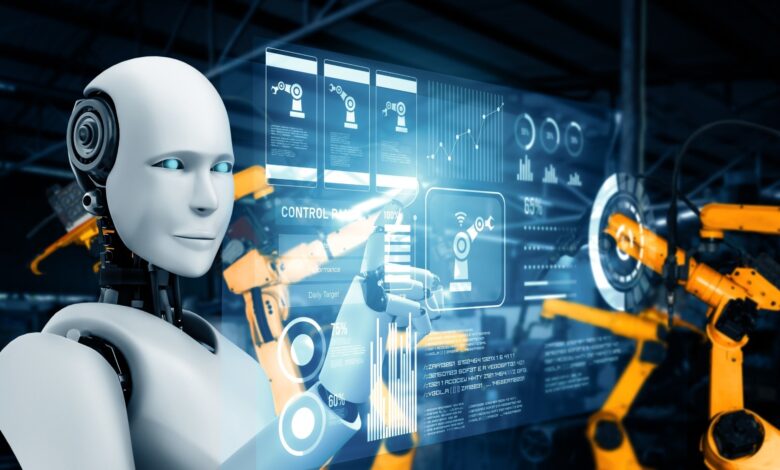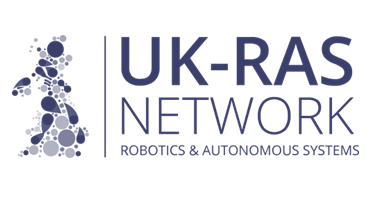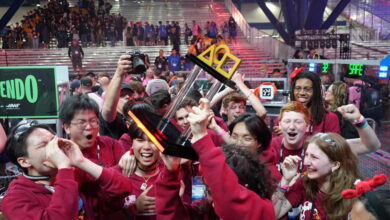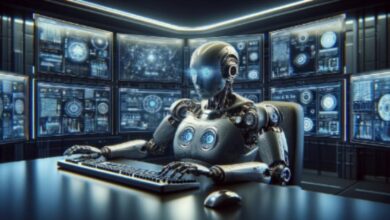AI and Robotics: Advancing Towards Humanoid Assistants

A recent article published in the journal Nature delved into the exciting advancements being made in the integration of artificial intelligence (AI) and robotics. The researchers explored the potential of these developments to create efficient humanoid robots, capable of seamlessly assisting in daily life. They aimed to highlight the promising advancements towards realizing a long-held vision of science fiction: a world where robots and automatic machines are a common reality in cities and homes.
Background
AI and robotics share a common objective: creating machines capable of performing tasks as well as, or better than, humans. However, their approaches differ fundamentally. AI primarily concerns itself with software, while robotics focuses on hardware. Historically, robots were programmed with fixed rules, constraining their adaptability and flexibility.
In contrast, AI has pioneered learning algorithms capable of navigating complex and uncertain scenarios, like natural language processing, computer vision, and strategic game-playing. However, these algorithms often demand extensive data and computational power.
About the Research
In their paper, the authors reviewed recent advancements and challenges in merging AI and robotics, to develop robots capable of learning from data and experience while seamlessly interacting with humans and their surroundings. Their analysis encompassed four key areas: the vision of commercial crew and cargo (3 C’s) program office (C-3PO) like droids, the promise of embodied experience, challenges and caution surrounding AI-powered robots, and the creation of an open-source dataset.
Regarding the vision of C-3PO-like droids, the study discussed the efforts of technology giants like OpenAI and Google DeepMind, alongside emerging startups, to develop humanoid robots equipped with versatile learning algorithms similar to those used in chatbots. Noteworthy examples such as Sophia and Atlas were highlighted.
Delving into the promise of incorporating embodied experiences into AI training, the researchers explored how this could pave the way for achieving artificial general intelligence (AGI). They referenced insights from AI scientist Akshara Rai, emphasizing the significance of physical intelligence in achieving true cognitive capabilities. Additionally, they outlined experiments utilizing robots to provide tangible learning contexts, such as RoboTurk and MetaWorld.
Furthermore, the paper acknowledged challenges and cautions associated with AI-powered robots, recognizing the gap between demonstrations and practical deployment. They identified challenges including data collection, hardware limitations, and safety concerns, while emphasizing the importance of addressing ethical and social implications in AI and robotics.
Finally, the authors introduced the DROID 2 dataset, comprising approximately 350 hours of video data from the Franka Panda 7 degree of freedom (7DoF) robot arm. This open-source collection captured remote operations conducted by individuals across 18 global laboratories, aimed at facilitating research in robotics and AI by providing valuable insights into robot behavior and learning mechanisms.
Significance of the Research
The study highlighted the impressive capabilities of humanoid robots leveraging versatile learning algorithms, showcasing proficiency in tasks ranging from locomotion and manipulation to conversation. However, despite these advancements, they still face challenges in adapting to novel unfamiliar situations and environments, as well as in interacting with humans in natural and socially acceptable manners.
Integrating embodied experience into AI learning holds promise for enriching contextual understanding and feedback, enabling the development of critical physical and social skills crucial for intelligence. However, this integration also presents challenges concerning scalability, transferability, and evaluation across diverse robots and tasks.
AI-driven robots could transform various domains, including healthcare, construction, manufacturing, mining, farming, aviation, driverless vehicle development, education, and entertainment. However, they also raised ethical and social issues, such as safety, accountability, transparency, and preservation of human dignity. Addressing these issues requires collaborative efforts among researchers, policymakers, and society as a whole.
Applications of AI and Robotics
In healthcare, AI and robotics can play a pivotal role in diagnosis, treatment, surgery, rehabilitation, and elderly care, enhancing service quality and efficiency while alleviating the workload on human professionals. For example, the Da Vinci surgical system utilizes AI to aid surgeons in minimally invasive procedures, while the PARO therapeutic robot provides emotional support to dementia patients.
Similarly, within education, these technologies can revolutionize learning experiences and outcomes for students, educators, and teachers, offering personalized, interactive, and engaging educational solutions. Projects like CoWriter assist children in improving handwriting skills through robotic assistance, and initiatives like RoboTutor teach basic literacy and numeracy skills in low-resource settings using AI-powered tablets.
Additionally, in the entertainment sector, AI and robotics can drive innovation and create immersive experiences across various mediums. They can help generate and manipulate content and interact with users. For instance, the Jibo social robot offers companionship and entertainment to families through AI, and the MuseNet project generates music in diverse styles and genres using AI algorithms.
Conclusion
In summary, the authors emphasized the transformative potential of integrating AI and robotics across various industries. While recognizing the challenges and limitations, they proposed that companies developing robots should collaborate across disciplines and engage with stakeholders and society to ensure responsible and beneficial deployment of AI and robotics. Moving forward, they expressed optimism that sci-fi scenarios featuring helpful humanoid robots in everyday life may become a reality in the future.
Journal Reference
Gibney, E. The AI revolution is coming to robots: how will it change them ?. Nature (2024). https://doi.org/10.1038/d41586-024-01442-5, https://www.nature.com/articles/s41598-024-53187-w



